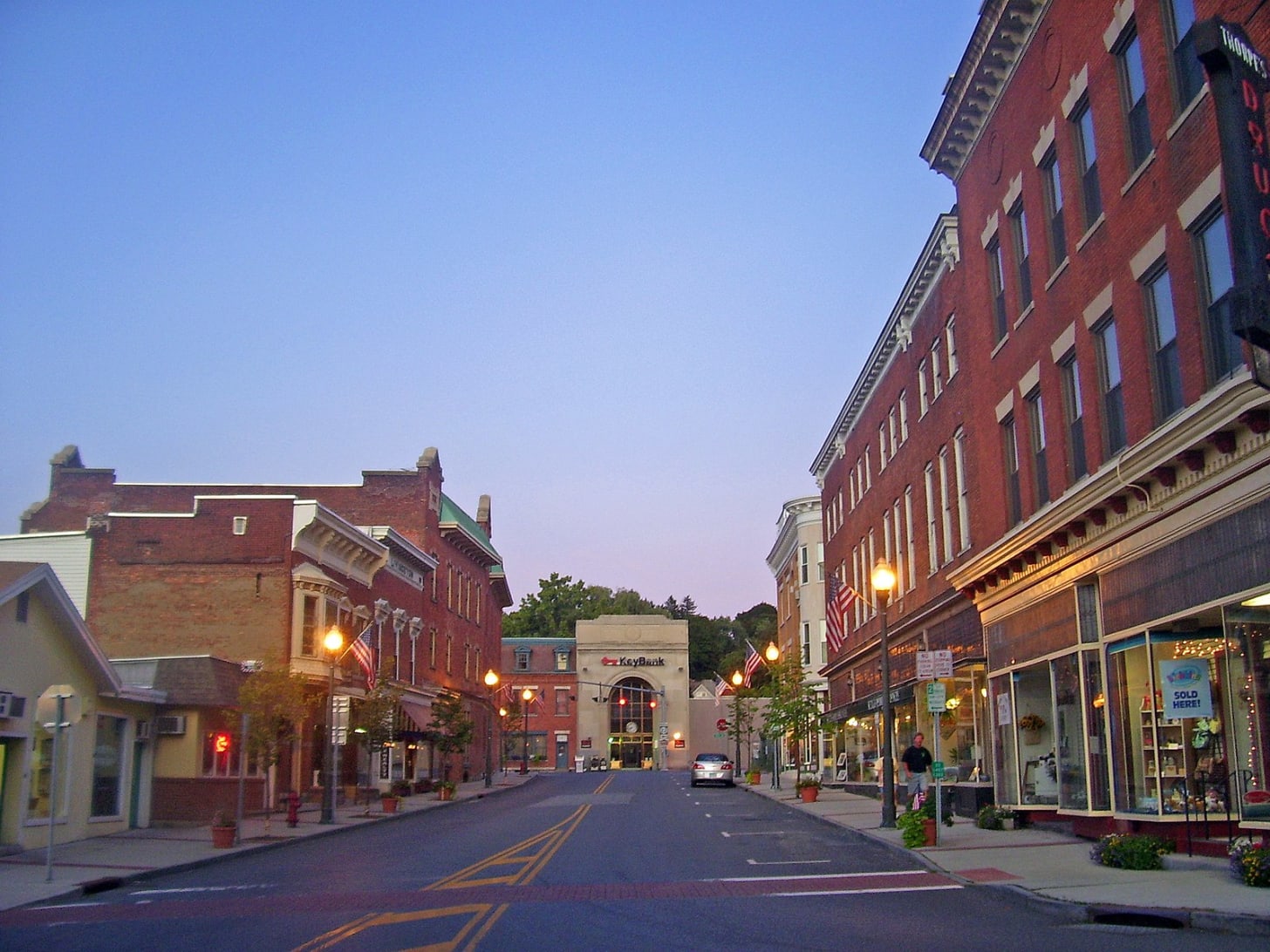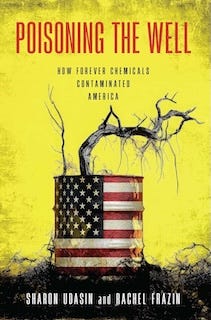A New Chapter For A Contaminated Town
Let's Celebrate A New Water Supply for the Village of Hoosick Falls, NY, After Years of Community Work For Clean Water.
Celebrations are in order for Hoosick Falls, New York, where a resolution to secure a new water source and infrastructure passed last week. It’s a significant step in the village's recovery from water contamination issues that began in 2014.
A new 1.25-mile raw water transmission line now connects a clean groundwater source to the village’s water treatment plant.
The new water supply distribution system is part of an ongoing commitment from the state and the community to address water contamination from past operations at the Saint-Gobain McCaffrey Street State Superfund site.
“The Hoosick Falls community is a national example of strength, resiliency, and collaboration in meeting an extraordinary challenge, and the milestone reached today will ensure clean drinking water for generations of residents,” Governor Kathy Hochul said in a statement. “My administration remains focused on holding polluters accountable for fully cleaning up contamination in Hoosick Falls and providing record investments to help support other communities to ensure drinking water protection across the state.”
You may have heard about Hoosick Falls, in central upstate New York, as the water became contaminated with a chemical used for years to make Teflon and hundreds of other products—perfluorooctanoic acid, or PFOA. This same chemical now pollutes the blood of almost all Americans. It builds up in our bodies and in the environment, which is why it’s considered a “forever chemical.”
PFOA (and other PFAS forever chemicals) enters the body through food, drinking water, inhalation of household dust and contact with products containing it. Studies have linked even tiny exposure to PFOA to kidney and testicular cancers, child development, damage to the immune system, heart and thyroid disease, and other serious conditions.
Sadly, the contamination was not announced as part of an EPA testing program. One concerned citizen—Michael Hickey, whose father worked at the local plastics plant died of kidney cancer in 2013—paid out of his own pocket for water tests, which detected PFOA at levels well beyond the non-enforceable health advisory of the EPA.
“All I typed in was Teflon and cancer, because that’s what was in the factory that was in Hoosick Falls where my father worked,” Michael Hickey told the PFAS Project Lab. “It took about five minutes.”
His internet search in 2014 revealed PFOA was used to make Teflon, so he took samples of village water and sent them to a lab to be tested with his own money. Results showed high levels of PFOA. Further testing by the New York State Department of Health (NYSDOH) showed his instincts were right, as they found PFOA levels as high as 600 ppt. Testing also revealed groundwater near Saint Gobain contained PFOA levels at 20- 18,000 ppt, and a nearby dump had levels as high as 21,000 ppt.
In 2024, the U.S. EPA established legally enforceable levels, called Maximum Contaminant Levels (MCLs), for six PFAS in drinking water: PFOA, PFOS, PFHxS, PFNA, and HFPO-DA. The final MCL (an enforceable level) for PFOA is 4 ppt.
Just like in Flint and other communities with water issues, local authorities initially downplayed the threat, but Hickey and other community members kept making noise. In December 2015, the EPA finally issued a warning to residents not to drink or cook with the water.
By June of 2016 residents of Hoosick Falls stormed the state Capitol, demanding answers, bio-monitoring for their health problems, and clean up.
Children, moms, and grandparents marched with signs and their blood contamination levels scrawled on their bodies. With a PFOA blood level of 51.5—more than 25 times the national average, Hailey Bussey carried a handwritten letter asking then-Gov. Andrew Cuomo why the administration, “left us to die like sick kittens.” Hailey was 10 years old at the time. Now that’s motivation that anyone who cares about an issue can make a difference!
In 2017 The U.S. EPA added the Saint-Gobain Performance Plastics site to the Superfund National Priorities List (NPL) of the country's most hazardous waste sites. Groundwater at the Saint-Gobain Performance Plastics facility, located at 14 McCaffrey Street, and in other locations in Hoosick Falls was shown to be contaminated with both PFOA and Trichloroethylene (TCE).
The McCaffrey Street facility was built in 1961, and had been used to manufacture circuit board laminates, polytetrafluoroethylene (PTFE)-coated fiberglass, and other PTFE products. In 1999, Saint-Gobain Performance Plastics purchased the facility and began operations there, using PFOA in its manufacturing process.
Why did it take state, federal, and local governments so long to warn the community about the dangerous toxic chemicals in their water? Since 2013, a nationwide EPA program that samples water for unregulated contaminants found PFOA in more than 100 public water systems in 27 states.
Tests were not conducted in Hoosick Falls because the water supply served less than 10,000 people. This town and many others are not big enough and didn’t have the resources to perform the tests—until the people demanded it. You can only imagine as EPA cuts continue at the federal level, how other small communities could be impacted.
Ultimately, the people’s fight for clean water in Hoosick Falls shows what’s possible when people are willing to fight for what’s right. And it also shows the need for tenacity and persistence—to keep fighting for what’s right.
View a map of the new transmission line in the village of Hoosick Falls.
The New York State Departments of Environmental Conservation (DEC) worked closely with the community and local leaders to evaluate water supply options and ensure the new groundwater source was located outside of the contaminated aquifer and fully compatible with the water treatment plant’s capabilities.
The $5.5 million project is part of a $45 million agreement between New York State, Saint-Gobain, and Honeywell to implement the new water supply, address PFOA contamination from historic industrial operations at the McCaffrey Street facility and other sites in the village, and reimburse the State for costs incurred by taxpayers for the cleanup.
“With the activation of its new water supply, the Village passes a significant milestone in its efforts to recover from PFOA contamination,” Hoosick Falls Mayor Rob Allen said in a statement. “With a new water source, new infrastructure and the retention of our permanent filtration system, ordered by the state and constructed and paid for by the companies responsible for the pollution, the Village is grateful to mark this accomplishment with our state partners, our local and state elected officials, and most importantly, the members of the great Hoosick community.”
Get more information and updates regarding ongoing remediation efforts. State agencies work with the Hoosick Area Community Participation Work Group to discuss the progress of the PFOA cleanup. Additional information and documents regarding State actions underway in the Hoosick Falls area are available on the DEC website.
In addition, the governor has proposed changes to modernize the State’s Superfund program to address emerging contaminants, enhance engagement with local communities, and better serve the state’s pressing economic, renewable energy, and affordable housing development needs. The Executive Budget has proposed $1.25 billion for 10 years to continue the ongoing progress in removing water and soil pollution in communities statewide.
May this small village and the state serve as an example of how to handle emerging contaminants found in our drinking water, so that other places can respond and take action to keep communities safe.
In Other News…
New Book Alert
Poisoning The Well—a new book comes out this week by Sharon Udasin and Rachel Frazin, two journalists who write for The Hill, sharing the shocking true-life story of how PFAS—a set of toxic chemicals most people have never heard of—poisoned the entire country. Based on original, shoe-leather reporting in four highly contaminated towns and damning documents from the polluters’ own files, Poisoning the Well traces an ugly history of corporate greed and devastation of human lives. We are working on an interview with the authors for a future story. Stay tuned!
Ignoring EPA Science Will Allow Pollution and Cancer to Fester
In a new opinion piece for Scientific American, Jennifer Sass discusses how Trump administration plans to destroy EPA science will leave the air we breathe and the water we drink more polluted.
“In one of the most dangerous acts against facts and science, the Trump administration announced in March that it will shutter the EPA’s independent research office,” she writes. “This will cut more than 1,000 scientists and technical experts who help the agency determine if, for example, a chemical poses a cancer risk, or a factory is polluting a nearby river. At the same time, Trump’s EPA has installed former oil and chemical industry lobbyists to write the rules to regulate those industries.”
What’s Going On At Medical Supply Warehouses?
An invisible chemical is poisoning thousands of unsuspecting warehouse workers—cancer-causing ethylene oxide. Only one state is doing anything about it. Read the full story here.
Celebrating any wins in your community? Share with us below! Still dealing with an issue! Share your frustrations too! I know how hard it can be and how sometimes it’s darkest just before the dawn.






WOW Erin
Another amazing story with positive results. I am praying that our fight in Maine ends up with positive results as well.
This is encouraging news for every town and community that standing up to corporate greed will pay off.